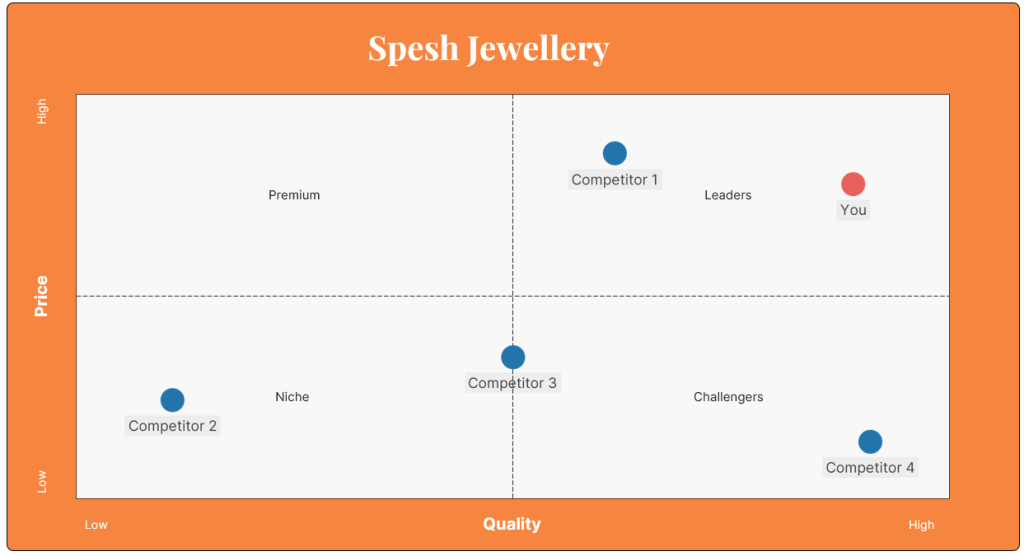What is perceptual mapping?
It’s a visual way to represent how customers perceive different brands or products.
It’s also called a competitive landscape map because it allows businesses to see how they are placed amongst their competition.
You create a two-dimensional grid, with each axis representing a different attribute that customers use to evaluate brands or products.
For example, you might create a perceptual map for smartphones with the axes “price” and “camera quality.”
Once you’ve created your grid, you can then plot your brand and competitors on the map based on how you think customers perceive them.
For example, if you think that customers perceive your smartphone as being expensive but having a great camera, you would plot it in the upper right corner of the grid.
Perceptual mapping can be used for a variety of purposes, but some of the most common include:
- Identifying opportunities for new products or services: By seeing gaps in the market, you can identify opportunities to create new products or services that meet your customers’ needs.
- Improving your brand positioning: By understanding how your customers perceive your brand relative to your competitors, you can adjust your marketing strategy to improve your positioning.
- Developing more effective marketing campaigns: When you know how your customers perceive your brand, you can build marketing campaigns that are more likely to resonate with them.
Example – Handmade Jewellery
Here’s an example of how a small business can use perceptual mapping to grow:
Let’s say you sell handmade jewellery. You want to increase sales by improving brand recognition and positioning.
You start by researching your target market to understand how they perceive your brand and products relative to your competitors. You then use the results of the survey to create a perceptual map.

The perceptual map shows that your brand is perceived as high-quality and expensive.
This may be consistent with your strategy, but your competitor, Competitor 4, offers high-quality products at a low price.
This is a challenge because it means you’re missing out on potential customers who are looking for more affordable jewellery options.
To improve your brand positioning, you develop a new line of more affordable jewellery to compete. You’ll want to refresh your perceptual map later to see if it changed your positioning on your competitive landscape.
Wrapping up
Here are a few tips for using perceptual mapping effectively:
- Use a variety of data sources. The more data you have, the more accurate your perceptual map will be. In addition to customer surveys, you can also use data from social media, online reviews, and market research studies.
- Segment your customers. Different customer segments may have different perceptions of your brand and products. Create separate perceptual maps for each segment to get a more accurate picture.
- Update your perceptual maps regularly. Customer perceptions can change over time, so updating your perceptual maps regularly is essential. This will help you identify any changes in the market and make necessary adjustments to your marketing strategy.
Perceptual mapping is a valuable tool for any business that wants to better understand its customers and improve its marketing strategy. By following the tips above, you can create perceptual maps that will help you grow and achieve your goals.